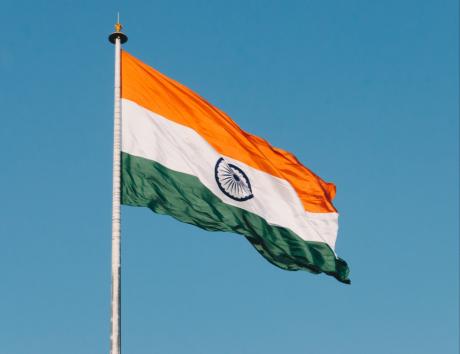Writing a great Indian resume: Tips, tricks, and more
When writing a resume, Indian job seekers must create a well-structured document that reflects their personal experiences and professional accolades. Unlike the succinct style favored in North American resumes and CVs, resumes in India often embrace a more detailed approach, reflecting subtle professional and cultural differences. If you’re searching for a specific job or are ready to take the next step in your career, this guide will help you wow hiring managers with a great Indian resume.

Indian resume format vs. North American resume format
The resume is a staple of hiring processes around the globe. However, much like the cover letter, it isn’t standardized across cultures or nations. Rather, each region has unique expectations regarding what these documents should and shouldn’t include, as well as their overall format and scope.
For example, North American resumes are known for being concise and focused on facts. This approach aligns with North American employers’ focus on privacy and preventing discrimination.
The United States and Canada have stringent anti-discrimination laws, which discourage hiring managers from requesting any information that may be indicative of bias.
Conversely, Indian resumes often include personal information, such as the candidate’s date of birth, marital status, and even a picture. This practice reflects India’s more personal approach to job applications.
Additionally, Indian resumes tend to be more detailed in terms of educational background. They sometimes include grades and academic achievements, while North American resumes are known for their brevity and emphasis on hard and soft skills. This distinction highlights the professional and cultural uniqueness of each region.
When applying for jobs in North America, it’s vital that you adopt a more economical approach, omitting personal details that would typically be expected in an Indian resume. For further guidance, explore Job Seeker’s resume articles, which include tips and examples of North American resumes.
When applying for jobs in India, you’ll need a traditional Indian resume that tells your story and helps hiring managers get to know you on a deeper level. Otherwise, you’ll struggle to connect with hiring teams and decrease your odds of landing an interview.
Expert Tip:
Resume samples Indian job seekers can leverage
On average, recruiters only spend about six to 10 seconds scanning a resume. As such, it’s critical to structure your Indian resume in a way that accommodates scanning. Be straightforward, use lots of bulleted lists, and clearly label each section.
As noted, Indian resumes tend to be a bit lengthier than North American resumes. However, that doesn’t mean you should be excessively wordy. It’s important to remain concise, but make sure you include personal insights that hiring managers can look over at their leisure.
In many cases, employers are simply looking to verify that you’ve included the desired information. Failing to label the sections of your Indian resume can lead to a quick disqualification, even if the content is present.
That said, determining exactly what to include in your resume can be tough. To help, we’ve outlined a few sample sections you should include in your Indian resume.
Personal details
Open your resume with some personal details, such as your name, contact information, date of birth, and a professional photograph. You should also include your marital status. While this might seem excessive by North American standards, it’s the norm in India.
If you skimp on the personal details, there’s a good chance the hiring manager will discard your resume. At the same time, you don’t have to tell your life story here — just provide a glimpse into who you are and what you bring to the table.
Career objective or summary
Provide a brief summary of your career objective and big-picture goals. Generally, this should be the only paragraph-style content in your Indian resume. The rest should be skimmable lists.
When writing your career objective or summary, make sure you reference the company you’re submitting your application to. The goal is to establish a connection between the job you’re applying for and your overarching objectives.
By contrast, your cover letter needs to feature paragraph-style content. For a better breakdown of the differences between Indian resumes and cover letters, explore our cover letter examples.
Educational background
In India, your educational qualifications can significantly impact your job prospects. You’ll therefore want to list the degrees you possess, along with the granting institutions, your grades, and any honors or distinctions you’ve received.
The educational background section is also a staple of North American resumes. However, hiring teams in the U.S. and elsewhere simply want a brief rundown of your degrees and where you attended school.
Traditionally, resumes follow a reverse chronological order, meaning you list your most recent work or educational experiences first and work your way backward. If you’re a recent graduate, however, it’s best to list your educational background before your work experience, even if you’ve had an entry-level job.
Work experience
Detail your professional experience, starting with the most recent role you’ve held. Highlight each position, key responsibilities, and notable achievements.
When possible, quantify your accomplishments. For instance, instead of saying you “cut project costs,” use specific phrasing like “I reduced project costs by 15%.” If you don’t have hard data, it’s okay to be vague, but prioritize achievements you can demonstrate and quantify to stand out amongst other applicants.
A list of hard skills (and soft skills)
Next, provide a list of your hard skills, followed by a separate section outlining your soft skills. Hard skills are abilities and talents that are specifically related to the job you’re applying for. Soft skills are more general and may include things like emotional intelligence, punctuality, and communication.
When listing your skills, make it a point to mention any abilities that were outlined in the job description (provided you possess them, of course). Matching your list of skills to those highlighted in the job posting shows that you’ve thoroughly researched the role you’re applying for.
Additional information
Adding some extra details to your Indian resume can give it a little more weight. Just make sure to avoid filler, instead focusing on useful information like certifications, any other languages you’re fluent in, hobbies, and interests.
While adding hobbies might seem trivial, they can give employers insight into your personality and cultural fit, which is particularly important in India.
Not sure what additional information to include in your Indian resume? Check out our resume templates for some inspiration.
References
It’s common for Indian resumes to include a section for references or state that they’re available upon request.
Generally, we recommend including a reference section and listing at least three people who can attest to your skills, demeanor, or accomplishments. When listing a reference, include their name, where they work, and an email and phone number where they can be reached.
If your resume is on the longer side, skip the references. Instead, include a header labeled “References” and mention that they’re available upon request.
"On average, recruiters only spend about six to 10 seconds scanning a resume. As such, it’s critical to structure your Indian resume in a way that accommodates scanning."
Crafting a winning resume for India and beyond
Writing a great Indian resume takes practice and diligence. Fortunately, you can accelerate the process using resume examples and templates. Don’t forget to take advantage of cover letter templates, as well, as they’ll help you create consistent content that gets you noticed by hiring managers.
Want additional tips and information about how to write an exceptional Indian resume? Explore Jobseekers' wealth of free resources to improve your chances of getting hired.
Impress potential employers with your resume
Follow step-by-step professional guidance to create a polished resume in minutes.



